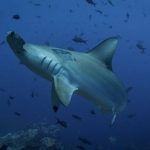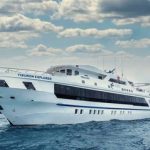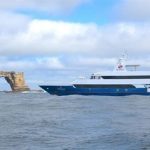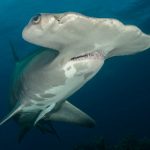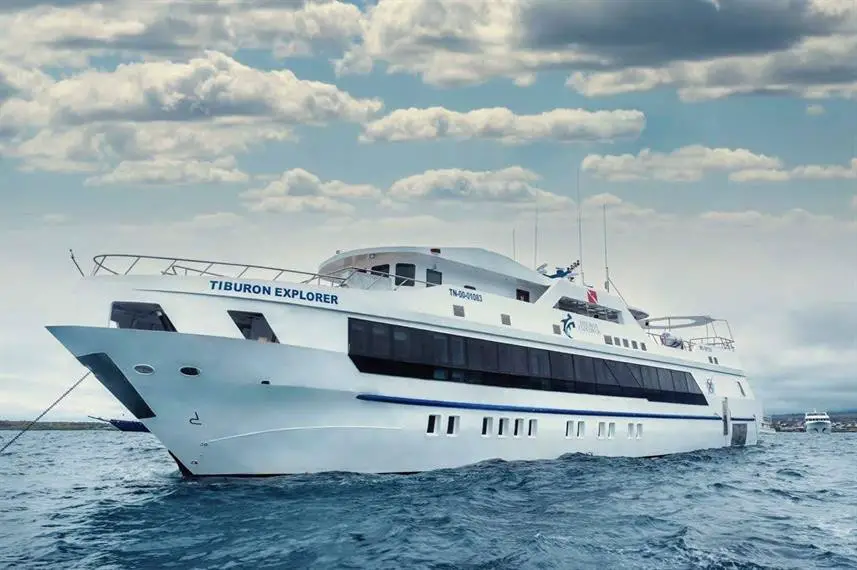
If you are planning a trip to the Galapagos Islands, you may be wondering; how difficult is diving in Galapagos?
The diving in the Galapagos islands can be difficult, as currents range between moderate to strong, and you may experience surges too that can create challenges for your safety stop. Some dives in Galapagos have such strong currents that you may need to grab hold of rocks to avoid drifting away.
The best way to experience the scuba diving in Galapagos is on a dive liveaboard (especially if you want to dive Darwin and Wolf Islands), and if you would like to dive Galapagos on a liveaboard you can view these using the following window:
How difficult is diving Darwin Island?
Diving Darwin Island Galapagos can be difficult due to changing conditions and strong currents, so you need PADI advanced diver certification or similar and 50-60 logged dives to dive there. Darwin is an unprotected area and surface conditions can be rough, making dive entry and exit a challenge.
The Pinnacle is one of the more difficult dive sites at Darwin Island so a PADI advanced diver certification and 50-60 logged dives are needed to dive there.
To dive Darwin Rock you need to be good with your buoyancy control, have experience diving in currents, and you need to be comfortable diving in close proximity to large marine life including hammerheads sharks, Galapagos sharks and manta rays.
Darwin Rock is not an area for beginner divers and those with an Open Water Diver certification.
To show how difficult and challenging the diving can be at Darwin’s Rock (Arch), this diver holds on for life at Darwin, where strong currents made for intense advance diving:
How difficult is diving Wolf Island?
Diving at Wolf Island Galapagos can be difficult, as surface conditions can be rough and the dives are often in strong currents with changing conditions from dive to dive. It’s the challenging conditions at Wolf Island that makes the diving only for experienced divers and not suitable for beginners.
To dive Darwin Rock you need to be good with your buoyancy control, have experience diving in currents, and you need to be comfortable diving in close proximity to large marine life including hammerheads sharks, Galapagos sharks and manta rays.
Darwin Rock is not an area for beginner divers and those with an Open Water Diver certification.
In the following video at Wolf Island diving from the Tiburon Explorer liveaboard, these divers jump into by 5+ knots of current:
How difficult is diving the Landslide at Wolf Island
Diving at the Landslide (or El Derrumbe) at Wolf Island can be difficult as it often has currents, visibility changes from 9-30 metres (30-100 feet), and surface conditions can be rough, which makes it an experienced diver site. You will see hammerhead sharks, sea turtles, eagle rays and barracudas.
The following video is a dive at The Landslide diving with eagle rays:
How difficult is diving Punta Vicente Roca (Isabela Island)
Punta Vincente Roca is not difficult to dive and suitable for beginners, but is one of the coldest Galapagos dives due to cool ocean currents from Antarctica, so divers should wear full-body 7mm wetsuits with hoods, or wear a drysuit, so you don’t have a wet-wetsuit to start cold on the next dive.
If you dive Punta Vincente Roca from a liveaboard, you’ll need to be an advanced diver to dive most of the other dives on the trip, and in particular Wolf and Darwin Islands.
How difficult is diving Cousins Rock Galapagos
The diving at Cousins Rock on the North East coast of Santiago Island isn’t difficult and is suitable for both beginners and advanced divers. You may experience small currents and surges at Cousins Rock, and the water can be cold too, so a thick wetsuit or a drysuit is required to keep warm.
Table of Galapagos liveaboards
This list of Galapagos liveaboards is in descending customer rating order, so the liveaboards with the highest customer rating will be at the top of the list. To filter this table for the features that are important for your Galapagos liveaboard trip, select from the list of filters below.
| Discover Liveaboard | Customer Reviews | Price Per Day | Number of Logged Dives | |
|---|---|---|---|---|
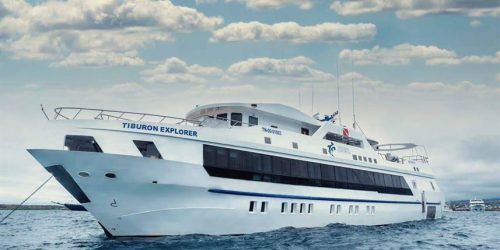 |
Review: MV Tiburon Explorer; Book: MV Tiburon Explorer | 9.7 Exceptional | from £612; $747; €698 | No minimum logged dives: NO; 10 logged dives: NO; 20 logged dives: NO; 30 logged dives: NO; 40 logged dives: NO; 50 logged dives or more: NO; Minimum 60 logged dives: NO; Minimum 80 logged dives: NO; Minimum 100 logged dives: YES. |
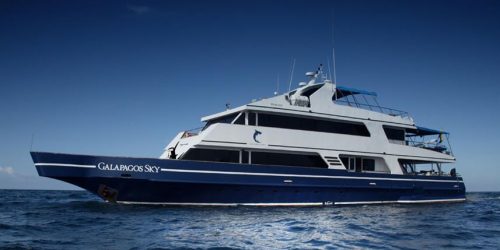 |
Review: MV Galapagos Sky; Book: MV Galapagos Sky | 9.5 Exceptional | from £708; $864; €807 | No minimum logged dives: NO; 10 logged dives: NO; 20 logged dives: NO; 30 logged dives: NO; 40 logged dives: NO; 50 logged dives or more: NO; Minimum 60 logged dives: YES; Minimum 80 logged dives: NO; Minimum 100 logged dives: NO. |
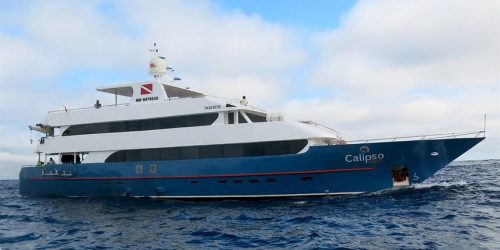 |
Review: MV Calipso; Book: MV Calipso | 9.4 Superb | from £658; $803; €750 | No minimum logged dives: NO; 10 logged dives: NO; 20 logged dives: NO; 30 logged dives: NO; 40 logged dives: NO; 50 logged dives or more: NO; Minimum 60 logged dives: NO; Minimum 80 logged dives: NO; Minimum 100 logged dives: YES. |
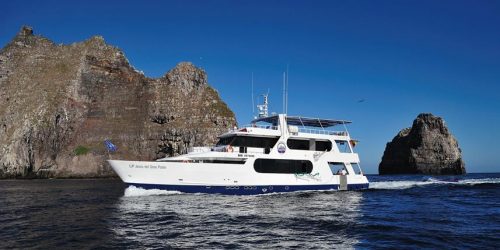 |
Review: MV Galapagos Aggressor III; Book: MV Galapagos Aggressor III | 9.1 Superb | from £580; $708; €661 | No minimum logged dives: YES; 10 logged dives: NO; 20 logged dives: NO; 30 logged dives: NO; 40 logged dives: NO; 50 logged dives or more: NO; Minimum 60 logged dives: NO; Minimum 80 logged dives: NO; Minimum 100 logged dives: NO. |
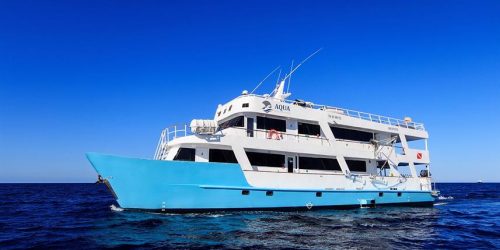 |
Review: MY Aqua; Book: MY Aqua | 9 Superb | from £457; $558; €521 | No minimum logged dives: NO; 10 logged dives: NO; 20 logged dives: NO; 30 logged dives: NO; 40 logged dives: NO; 50 logged dives or more: YES; Minimum 60 logged dives: NO; Minimum 80 logged dives: NO; Minimum 100 logged dives: NO. |
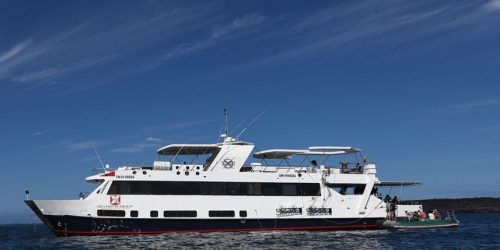 |
Review: MV Humboldt Explorer; Book: MV Humboldt Explorer | 8.9 Fabulous | from £489; $597; €557 | No minimum logged dives: NO; 10 logged dives: NO; 20 logged dives: NO; 30 logged dives: NO; 40 logged dives: NO; 50 logged dives or more: NO; Minimum 60 logged dives: NO; Minimum 80 logged dives: NO; Minimum 100 logged dives: YES. |
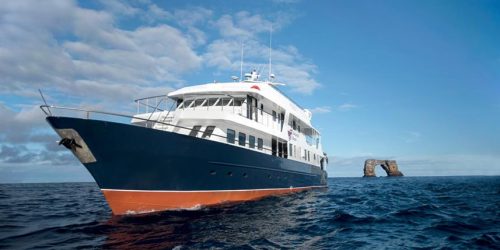 |
Review: MV Galapagos Master; Book: MV Galapagos Master | 8.6 Fabulous | from £459; $560; €523 | No minimum logged dives: NO; 10 logged dives: NO; 20 logged dives: NO; 30 logged dives: NO; 40 logged dives: NO; 50 logged dives or more: YES; Minimum 60 logged dives: NO; Minimum 80 logged dives: NO; Minimum 100 logged dives: NO. |
- 1
- 2
I hope you enjoyed this article about how difficult is diving in Galapagos?
I’d love to hear from you. Tell us about your adventures of diving and snorkeling, in the comments below. Please also share your photos. Either from your underwater cameras or videos from your waterproof Gopro’s!
If this article hasn’t answered all of your questions. If you have more questions either about snorkeling or scuba diving (or specifically about how difficult is diving in Galapagos), please comment below with your questions.
There will also be many more articles about scuba diving (and snorkeling) for you to read and learn about these fabulous sports.
Have fun and be safe!

